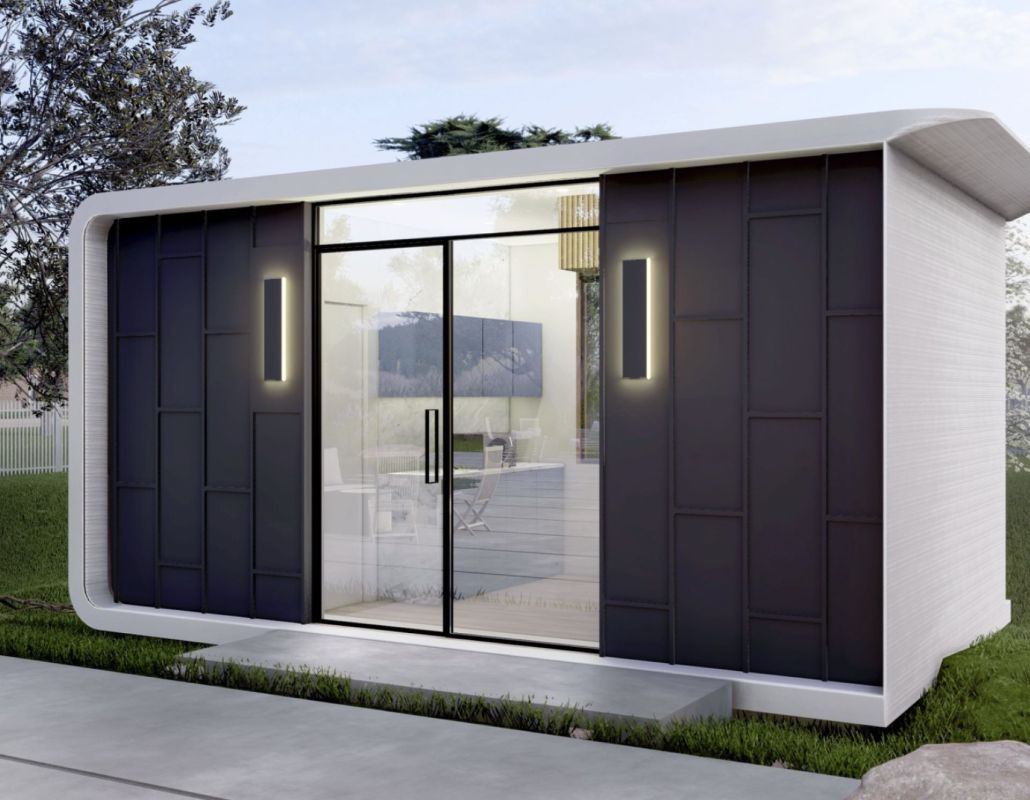The way houses can be built is about to change drastically, and in this case, that's a very good thing.
An extended-stay hotel in Ridgecrest, California, will be adding 14 freestanding residential units that will be 3D-printed and made from recycled plastic.
What are 3D-printed homes?
According to Azure Printed Homes, a California startup engaged in the production of 3D-printed houses, these residential structures will be built using a composite material comprising 60% recycled plastic.
The remaining portion consists of fiberglass to enhance structural strength and a stabilizer to safeguard against the damaging effects of ultraviolet light, as was reported by Bakersfield.com.
These structures were reported to cost about 30% less than conventional homes and are much better for the environment, in large part because they create little to no waste. One of the units will be 900 square feet with two bedrooms and cost $199,000 to make.
According to Zillow, the average conventional home in California costs $743,362, and even the average condo/co-op, which may be more comparable, checks in at $637,083.
Another benefit is they are produced very quickly. According to the co-founder of Azure Printed Homes, Gene Eidelman, the recycled plastic homes take only a full day to be 3D-printed.
Other 3D-printing companies claim smaller shelters can be created in as little as 30 minutes, while others can build 10 houses in just 24 hours.
In July of last year, the 3D-printed housing company Alquist sold a 1,280-square-foot home to a family for $235,000. Another such company, Mighty Buildings, is offering 1,450-square-foot homes priced at $595,000 in Coachella, California.
Why are these kinds of homes important?
Today, the traditional construction industry is responsible for 27% of global planet-warming gas pollution, in large part because of the energy required to create building materials and because of cement, which on its own accounts for 8% of the planet-warming gases.
Creating homes with 3D-printing technology in a fraction of the time can have numerous economic and environmental benefits.
As housing costs continue to surge, affordability poses a significant challenge to the widespread adoption of environmentally friendly construction alternatives.
While it's true that the current generation of sustainable housing carries a higher price tag compared to traditional construction methods, as the scale expands and the efficiency of 3D printing in construction improves, prices will decrease, leading to the realization of an economy of scale.
How 3D-printed homes can save people and the planet
The use of recycled materials instead of cement presents a huge opportunity in the name of environmental sustainability. This practice can prevent enormous amounts of waste from going into landfills, much of which gets incinerated, polluting the atmosphere and warming the planet.
Recycling trash to build the homes of the future is a much better bet than setting it on fire.
These homes can also save people.
By 2030, an estimated three billion individuals will require better housing, or approximately 96,000 new homes daily. The adoption of 3D-printed houses on a large scale has the potential to quickly and efficiently provide shelter for millions of people.
"We're excited to see something different," Heather Spurlock, a Ridgecrest planning analyst, said in the Bakersfield.com report. "It might change people's perception for what people could build for their backyards."
Join our free newsletter for weekly updates on the coolest innovations improving our lives and saving our planet.









